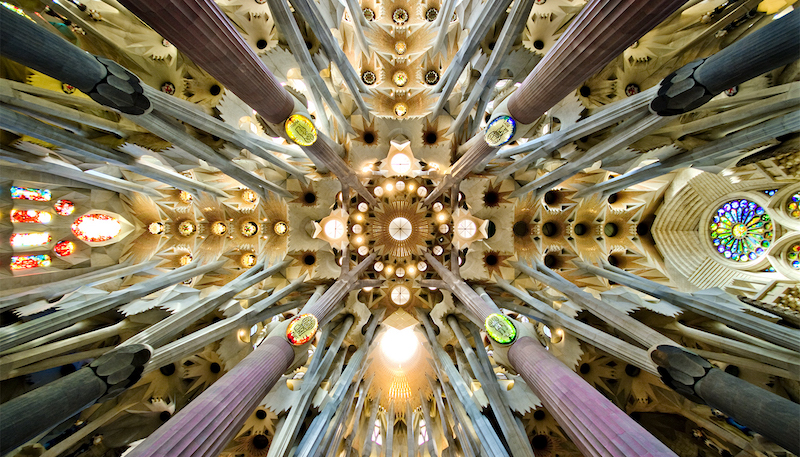It is said that travel broadens the mind, and beginning in 2017 the American Institute of Architects (AIA) is offering a new global travel program specifically focused on broadening the architectural mind.
Architectural Adventures, as the program has been dubbed, will offer small-group trips tailored for the discovery and appreciation of architecture. Every Architectural Adventures tour will feature subject-matter experts, hand-picked by the AIA, to guide travelers and enliven their awareness of the world’s architecture. The tour guides will offer an up-close view of not just the iconic landmarks and buildings in the various cities, but also an explanation of how the historical, political and cultural events helped shape the cityscapes.
Architectural Adventures provides individuals with the opportunity to participate in special excursions, gain exclusive behind-the-scenes access, and get insider knowledge to popular sights as well as lesser-known, yet equally fascinating architecture.
2017 destinations and highlights are listed below:
- Havana: In March, set forth on a six-day immersion in the Cuban capital that spans from Old Havana and the 16th century stone fort that guards Havana Bay to the city’s early twentieth-century Art Deco wonders and its most prominent contemporary projects.
- Barcelona: In March, discover Antoni Gaudí’s Modernist marvels and see the city’s medieval Gothic Quarter.
- Chicago: In April, explore the varied works of Frank Lloyd Wright and see why Chicago is known as the first city of American architecture.
- Lisbon to London: In April, cruise Europe’s Atlantic coast, stopping to see its most spectacular sites and structures, like the Frank Gehry-designed Guggenheim Museum in Bilbao, Spain and France’s Mont Saint-Michel.
- Northern Italy: In May, immerse yourself in the Renaissance world of Andrea Palladio and visit Venice for an exclusive tour of St. Mark’s Basilica.
- Cities of the Baltic Sea: In June, sail from Copenhagen to Gdansk to Tallinn to St. Petersburg to Helsinki to Stockholm, stopping to see the Baltic’s grandest designs.
- Along the Danube: In June, experience Central Europe’s signature cities, including Prague, Vienna, Bratislava, and Budapest.
- London: In July, wander London’s charming back streets and towering triumphs like Westminster Abbey and St. Paul’s Cathedral.
- Portugal and Northern Spain: In October, take an epic 17-day journey from Lisbon to Barcelona by way of the seminal cities of the Spanish Pyrenees.
- China: In October, spend two weeks exploring Chinese culture and design in Beijing, Pingyao, Hangzhou, and Shanghai.
Accommodations, most meals, tour transportation, and logistical details of the trip are included in the tours. For more details on booking availabilities and new trip announcements visit architecturaladventures.org.
Related Stories
| Dec 2, 2014
Bjarke Ingels unveils cave-like plan for public square in Battersea Power Station
A Malaysian development consortium is guiding the project, which is meant to mimic the caves of Gunung Mulu National Park in Sarawak, East Malaysia.
| Dec 1, 2014
9 most controversial buildings ever: ArchDaily report
Inexplicable designs. Questionable functionality. Absurd budgeting. Just plain inappropriate. These are some of the characteristics that distinguish projects that ArchDaily has identified as most controversial in the annals of architecture and construction.
| Dec 1, 2014
Skanska, Foster + Partners team up on development of first commercial 3D concrete printing robot
Skanska will participate in an 18-month program with a consortium of partners to develop a robot capable of printing complex structural components with concrete.
| Dec 1, 2014
How public-private partnerships can help with public building projects
Minimizing lifecycle costs and transferring risk to the private sector are among the benefits to applying the P3 project delivery model on public building projects, according to experts from Skanska USA.
High-rise Construction | Dec 1, 2014
ThyssenKrupp develops world’s first rope-free elevator system
ThyssenKrupp's latest offering, named MULTI, will allow several cabins in the same shaft to move vertically and horizontally.
| Nov 29, 2014
20 tallest towers that were never completed
Remember the Chicago Spire? What about Russia Tower? These are two of the tallest building projects that were started, but never completed, according to the Council on Tall Buildings and Urban Habitat. The CTBUH Research team offers a roundup of the top 20 stalled skyscrapers across the globe.
| Nov 26, 2014
USITT Selects Bahrain National Theatre for Honor Award
The Bahrain National Theatre will be recognized with an Honor Award by the United States Institute for Theatre Technology (USITT) in 2015.
| Nov 26, 2014
How the 'maker culture' brings the power of design to life
Most people affiliate the maker culture with metal working, welding, ceramics, glass blowing, painting, and soldering. But it also includes coding and online content creation, writes Gensler’s Douglas Wittnebel.
| Nov 26, 2014
U.S. Steel decides to stay in Pittsburgh, plans new HQ near Penguins arena
The giant steelmaker has agreed to move into a new headquarters that is slated to be part of a major redevelopment.
Sponsored | | Nov 26, 2014
It’s time to start trusting your employees more
A recent study published in the journal Psychological Science revealed that employees were 26% more satisfied in their roles when they had positions of power. SPONSORED CONTENT

















